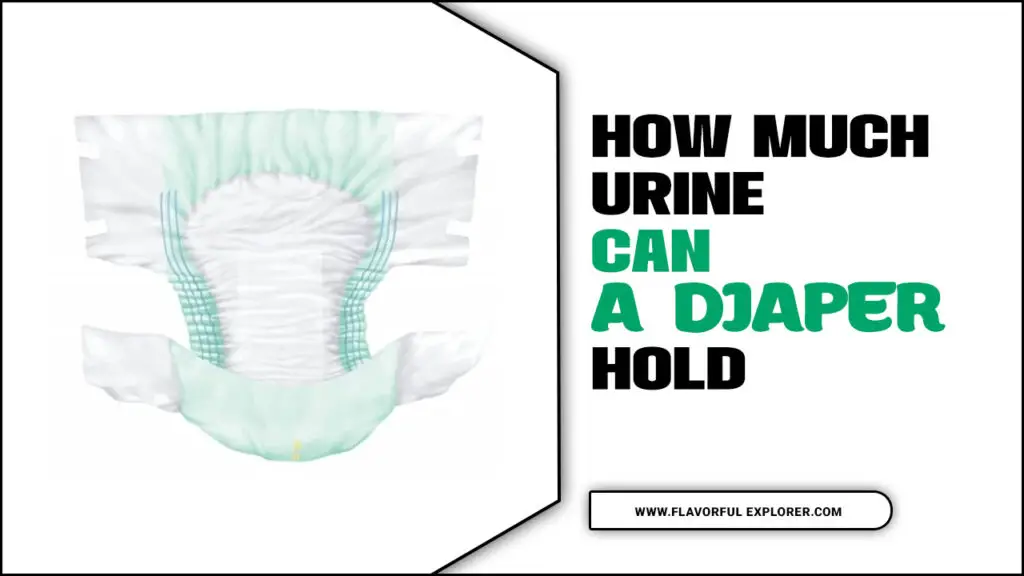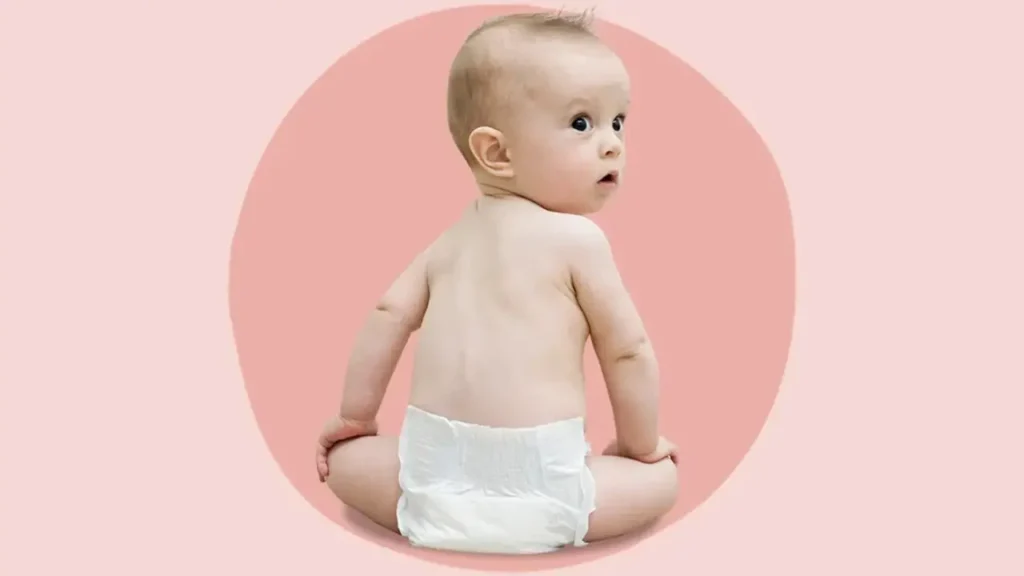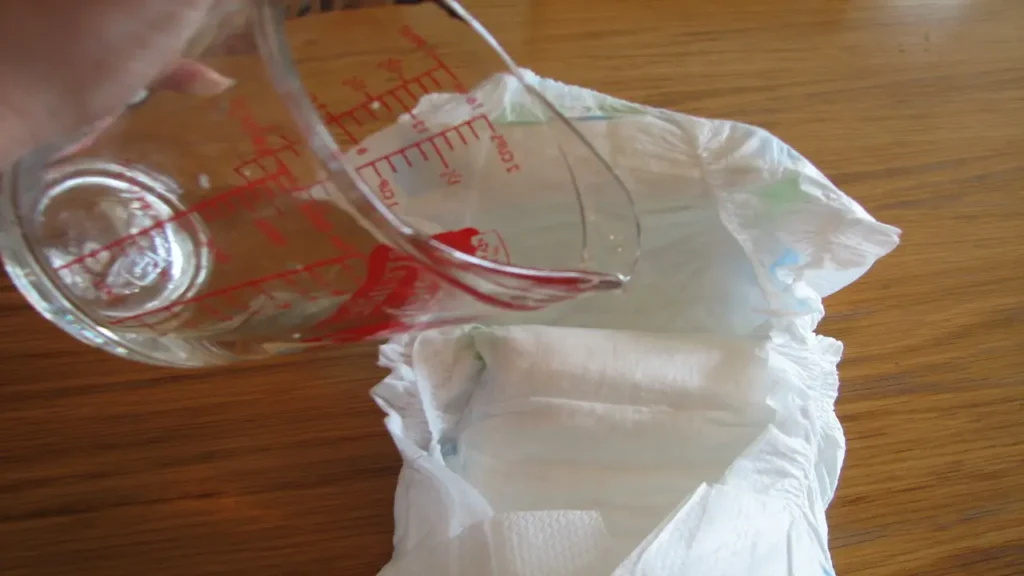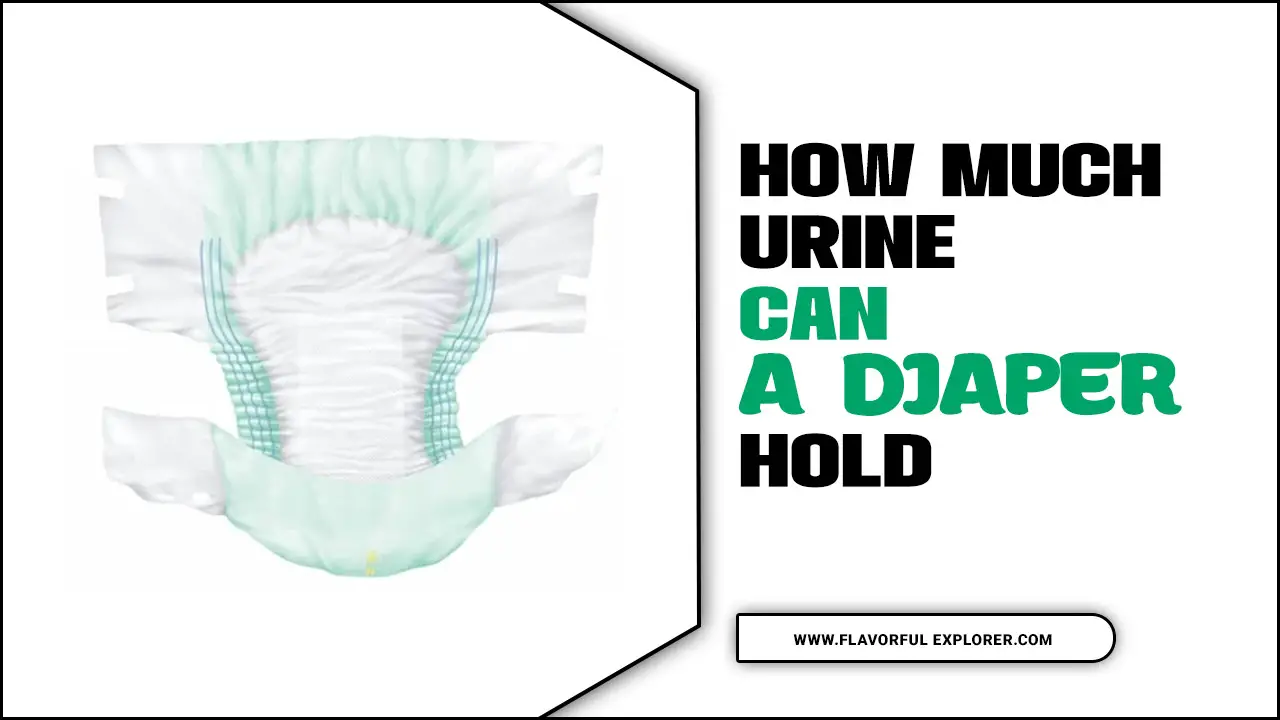Urine is a natural bodily function that every human experiences multiple times daily. This means frequent diaper changes for infants and toddlers to keep them clean and comfortable.
As a parent or caregiver, one may wonder just how much urine a diaper can hold before it needs to be changed. After all, constantly changing diapers can be both time-consuming and costly. This question has been a topic of interest for many, and as such, various studies have been conducted to determine a diaper’s capacity.
Here, we will delve into the science behind diaper absorbency and explore how much urine can a diaper hold. We will also discuss the different types of diapers available in the market and their varying absorbency levels.

What Is Baby Diapers?

Baby diapers have specific designs of absorbent garments that keep babies clean and dry. They are a must-have item for parents and caregivers of infants and toddlers. Baby diapers come in various sizes, shapes, and styles to cater to the needs of different age groups and stages of development.
The primary function of baby diapers is to prevent leakage and protect the baby’s delicate skin from moisture and irritation. They comprise multiple layers, including an absorbent core, a leak-proof outer layer, and fastening tapes or tabs to secure the diaper. The inner layer of the diaper is usually made from soft and breathable materials to provide comfort and prevent rashes.
How Much Urine Can A Diaper Hold – Explained

Here is the how much urine can a diaper hold? Diapers are designed to hold a certain amount of urine before leaking. The exact capacity can vary depending on the brand and size of the diaper. However, on average, a typical diaper can hold around 300-500 milliliters of urine.
This capacity is achieved through superabsorbent polymers (SAPs) incorporated into the diaper’s core. These SAPs can absorb and lock in liquid, preventing it from leaking. The diaper’s outer layer has specific designs to be water-resistant, further reducing the chances of leakage.
It is important to note that as the diaper approaches its maximum capacity, it may become heavier and bulkier, impacting the wearer’s comfort. Therefore, it is crucial to change diapers promptly to ensure the baby’s hygiene and comfort.
On average, newborn diapers can hold up to 1.5 to 2 ounces (44 to 59 milliliters) of urine, while larger sizes can hold around 6 to 7 ounces (177 to 207 milliliters). It’s important to note that these are just general estimates, and the absorbency can also depend on the quality and material of the diaper.
Factors Affecting Diaper Absorbency

Factors Affecting Diaper Absorbency include the type of diaper, the size of the diaper, the material used in the diaper, and the baby’s urine output. Different diapers, such as disposable, cloth, or hybrid, have varying absorbency levels.
Disposable diapers have specific designs to hold a certain amount of urine, while cloth diapers may require additional inserts or boosters for enhanced absorbency. The size of the diaper also plays a role, as a larger diaper generally has a higher capacity to hold urine. Factors Affecting Diaper Absorbency:
- Material: The type of material used in diapers can greatly affect their absorbency. Diapers made from high-quality and absorbent materials, such as superabsorbent polymers (SAP), tend to have higher absorbency levels.
- Design: The diaper’s design is crucial to its absorbency. Diapers with multiple layers and a well-designed core are more likely to distribute and retain the liquid efficiently, enhancing absorbency.
- Fit: A proper fit is essential for optimal absorbency. Diapers that are too tight or too loose may not be able to effectively absorb and retain liquid, resulting in leaks and reduced absorbency.
- Wetness indicator: Diapers equipped with wetness indicators can help caregivers know when the diaper needs to be changed. This feature helps prevent overloading the diaper, allowing it to maintain its absorbency.
- Size: Choosing the correct diaper size is vital for maximum absorbency.
Diaper Absorbency Standards And Regulations

Diaper Absorbency Standards and Regulations refer to the guidelines and requirements set by various regulatory bodies to ensure the safety and performance of diapers in terms of their absorbency. These standards aim to provide consumers with reliable information regarding diapers’ absorbent capacity and protect against potential health risks.
Different countries or regions may have specific diaper standards and regulations. For example, in the United States, the U.S. Consumer Product Safety Commission (CPSC) and the American Society for Testing and Materials (ASTM) have established guidelines for diaper absorbency.
The standards typically cover aspects such as the testing methods for measuring absorbency, the minimum absorbent capacity a diaper should meet, and the labeling requirements for diaper packaging. They may also address other aspects of diaper performance, such as leakage prevention and comfort.
These regulations are important as they ensure that diapers meet certain quality and safety criteria. They also help consumers make informed choices when purchasing diapers for their babies or themselves.
Diaper Brands And Their Absorbency Levels
Several diaper brands are available on the market, each offering different levels of absorbency. Determining how much urine a diaper can hold largely depends on the brand and quality of the product. Some diapers have specific designs to hold more urine than others, using advanced absorbent materials and innovative technology.
These high-performance diapers often have multiple layers of absorbent material, including a core that can quickly wick away moisture and lock it in, keeping the baby’s skin dry and comfortable. Here are some popular diaper brands and their absorbency levels:
- Pampers: Pampers offer a range of diapers with varying absorbency levels. Their Swaddlers line is famous for its high absorbency, providing up to 12 hours of protection. The Baby Dry diapers also have a design that locks in wetness for up to 12 hours.
- Huggies: Huggies is another well-known diaper brand. Their Little Snugglers line offers excellent absorbency and is suitable for newborns. The Snug & Dry diapers have specific designs to keep your baby dry for 12 hours.
- Luvs: Luvs diapers are known for their affordability and absorbency. They offer Leakguards that provide up to 12 hours of protection, keeping your baby dry and comfortable.
- Honest Company: The Honest Company offers diapers made with plant-based materials.
Tips For Maximizing Diaper Absorbency

Maximizing diaper absorbency is a crucial aspect of ensuring the comfort and well-being of infants and toddlers. Diapers have specific designs to provide a barrier between the skin and bodily waste, thereby preventing irritation, discomfort, and potential health risks.
However, the efficiency of a diaper’s absorbency is directly linked to its ability to handle and contain moisture effectively. Here are some tips for maximizing diaper absorbency:
- Choose the right diaper: Look for diapers that are specifically designed for maximum absorbency. They are usually labeled as “overnight” or “extra absorbent” diapers.
- Size matters: Make sure you are using the correct diaper size for your baby. A diaper that is too small may not be able to hold as much urine, while a diaper that is too big may not fit properly and can lead to leaks.
- Proper diaper placement: Ensure that the diaper is snugly and securely fastened around your baby’s waist and legs. This will help prevent any gaps where urine can escape.
- Change diapers frequently: Regularly changing diapers is essential for maintaining good hygiene and preventing leaks. Be sure to check the diaper frequently and change it as soon as it becomes wet or soiled.
- Add an absorbent pad: If you have a heavy wetter or need extra protection, you can place an absorbent pad or booster inside the diaper. These pads have specific designs to increase absorbency and minimize leaks.
- Consider diaper inserts: Some diapers come with inserts or liners that can be added for additional absorbency. These inserts can be particularly helpful during nighttime use or for babies who urinate heavily.
- Avoid over-tightening: While a snug fit is important, be cautious not to over-tighten the diaper as it may restrict airflow and cause discomfort for your baby.
Troubleshooting Diaper Leaks
Troubleshooting Diaper Leaks troubleshooting diaper leaks, understanding how much urine a diaper can hold is crucial. The absorbency of a diaper is typically moderate in milliliters (ml) or fluid ounces (oz).
The exact amount of urine a diaper can hold depends on various factors, including the diaper’s size and brand, the baby’s age and size, and the quality of the absorbent core. Troubleshooting Diaper Leaks:
- Check the fit: Ensure the diaper is properly sized and snugly fitted around your baby’s waist and legs. A loose diaper can lead to leaks.
- Absorbency: Consider using more absorbent diapers if your baby frequently experiences leaks. Look for diapers designed for overnight use or those with extra absorbent layers.
- Change frequently: Regularly changing your baby’s diaper can help prevent leaks. Check the diaper every 2-3 hours or when it is dirty or full.
- Positioning: Make sure the diaper is positioned correctly. You should raise the back portion to the front and pull the leg cuffs outwards to create a seal.
- Double diapering: If leaks persist, you can try double diapering by using two diapers simultaneously. Ensure that the inner diaper is snug and properly fitted before putting on the outer diaper.
Conclusion
The capacity of a diaper to hold urine depends on various factors, such as the size and weight of the child, the brand and type of diaper, and the frequency of changes. Smaller diapers generally have a lower urine-holding capacity for newborns and infants than larger ones.
This is because smaller diapers have less absorbent material and a smaller surface area. As a child grows and transitions into larger diaper sizes, the capacity to hold urine typically increases. Additionally, the quality and brand of the diaper can play a significant role in its absorbency. We hope now you understand how much urine can a diaper hold.
FAQ
1.What Is The Average Amount Of Urine That A Diaper Can Hold Before It Starts To Leak?
Ans: The average amount of urine a diaper can hold before it starts to leak varies depending on the size and brand of the diaper. However, most infant diapers can typically hold around 1 to 2 cups (237 to 473 milliliters) of urine before they reach their maximum capacity and begin to leak.
2.Are There Any Specific Diaper Brands Or Types That Are Known For Their High Urine-Holding Capacity?
Ans: Specific diaper brands and types are famous for their high urine-holding capacity. Some popular brands include Pampers, Huggies, and Luvs. These brands often offer diapers with advanced absorbent technology, such as extra layers, gel beads, or a high-quality absorbent core, which helps to increase their urine-holding capacity.
3.How Does The Size Of A Diaper Affect Its Urine-Holding Capacity?
Ans: The size of a diaper does not directly affect its urine-holding capacity. The material, construction, and absorbent core determine the urine-holding capacity of a diaper. A properly designed and absorbent diaper can hold a specific amount of urine, regardless of size.
4.Is There A Limit To How Much Urine A Diaper Can Hold?
Ans: Yes, there is a limit to how much urine a diaper can hold. Diapers have specific designs with absorbent materials that can hold a certain amount of liquid, typically ranging from 1 to 2 cups. However, exceeding this limit can cause leakage, discomfort, and potential skin irritation for the wearer.
5.What Is The Average Amount Of Urine That A Diaper Can Hold Before It Starts Leaking?
The average amount of urine that a diaper can hold before it starts leaking varies depending on the size and brand of the diaper. However, most diapers can hold 200-300 milliliters of urine, equivalent to 7-10 fluid ounces.
